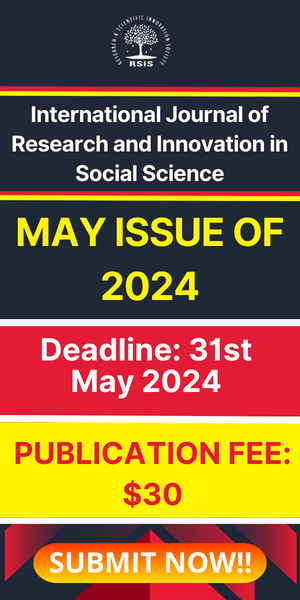Bioadsorption of Thermal Waste Using Low Cost Adsorbent
- June 3, 2020
- Posted by: RSIS
- Categories: Civil Engineering, IJRSI
International Journal of Research and Scientific Innovation (IJRSI) | Volume VII, Issue V, May 2020 | ISSN 2321–2705
Bioadsorption of Thermal Waste Using Low Cost Adsorbent
Manasa S.R
Department of Civil Engineering, Navkis College of Engineering, Hassan, India
Abstract: An increase in population causing rapid industrialization was found to consequently increase the generation of wastewater. Heavy metals are the major toxicants found in industrial wastewaters. Conventional methods for the removal of metal ions such as chemical precipitation and membrane filtration are exceptionally expensive. Biosorption and bioaccumulation are eco-friendly alternatives for bioadsorption process. An Orange, Mosambi, Lemon and Banana peel, a discarded organic waste which is used to produce bioadsorbent. The orange and lemon peel based bioadsorbent was assessed for removal of heavy metal pollutant. Fly Ash, a waste of the Raichur Thermal Power Plants has been utilized as an adsorbate. The various experimental conditions such as pH, particle sizes, adsorbent dosage and variation of temperature which effects the heavy metal pollutant adsorption were investigated for orange and lemon peel. The percentage of adsorption was found to be more for orange & lemon peel. The maximum adsorption capacity of orange and lemon peel was observed at pH4 of about 53% and 31% respectively, 30°C of temperature of about 37% and 21% respectively, 100 µ of particle size 100 of about 81% and 82% respectively and 1gm of adsorbent dosage of about 21% and 22% respectively.
Keywords— Heavy metal, biosorption, fruit peels, bioadsorbent, polymath software
I. INTRODUCTION
Rapid development has directed to increased disposal of heavy metals into the environment. Therefore, waste treatment is considered to be the most important goals for industry. At present plenty of heavy metals are found in drinking water, air and soil due to increased use of these poisonous compounds. Disparate organic pollutants, the majority of which are vulnerable to biological degradation, heavy metal ions do not degrade into harmless end products(Ozcan ., et al 2005). Contamination of lakes and streams due to the existence of heavy metals which flows from the natural aquatic ecosystem, as these contaminants gets adsorbed onto the soil and then flows in to the lakes etc. has cause the serious problem to human health(Rajkumar,S.A.,. et al 1998) Therefore, it is necessary to search for new technologies to remove toxic metals from wastewaters has focused attention on biosorption, which depends on metal binding property to various biological materials.


